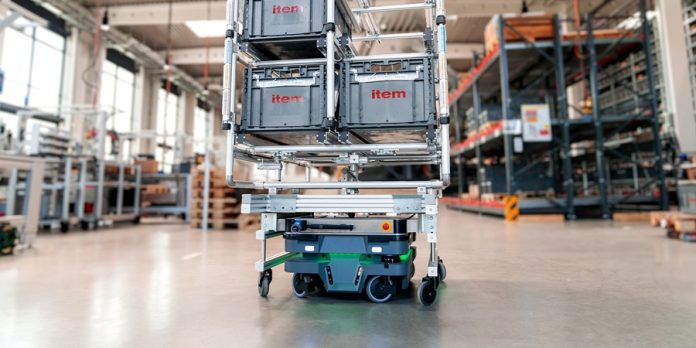In the realm of industrial automation, mobile Automated Guided Vehicles (AGVs) and Autonomous Mobile Robots (AMRs) are indispensable in enhancing efficiency by transporting materials within factories and warehouses. Both AGVs and AMRs share fundamental attributes and perform similar automation tasks, but their key differences in navigation capabilities and obstacle avoidance set them apart.
AGVs: Precision and Predictability
AGVs operate by following predetermined routes, and they do not deviate from these paths. When an AGV encounters an obstacle, it stops and waits until the obstacle is removed. AGVs employ various sensing techniques to detect their routes:
- Magnetic Tape: Sensors under the AGV detect magnetic tape on the factory floor and adjust the vehicle’s position accordingly. Additional magnetic tape can encode specific locations.
- Inductive Wire: Embedded wires in the floor guide the AGV, with sensors detecting the wire to maintain the correct path.
- Visual Tracking: Coloured tapes or markers like AprilTags are placed on the ground and detected by RGB cameras to map the route and determine location.
- Laser Guidance: A 360° laser on the AGV interacts with reflectors installed in the facility, measuring distances and angles to triangulate the AGV’s position.
AMRs: Flexibility and Intelligence
AMRs, on the other hand, utilize Simultaneous Localization and Mapping (SLAM) to navigate autonomously. Equipped with depth sensors, typically Lidar scanners, AMRs create and store detailed maps of their environment. This process involves initially driving the AMR around the facility to accumulate scans and generate a complete map. The map is then stored on the AMR and in fleet management control software and can be enhanced with additional data such as keep-out zones, speed reduction areas, and docking station locations. Goals are set on the map as coordinates, which the AMR navigates between by continuously comparing real-time scans with the stored map and adjusting its route to avoid obstacles.
Advantages and Disadvantages of AGVs
The main advantage of AGVs is their ability to follow a predetermined route with high precision and consistency, making them ideal for high-volume, repetitive tasks. However, AGVs require substantial infrastructural changes, such as installing and maintaining tapes, wires, or reflectors. These components are susceptible to wear and tear, and any necessary adjustments can significantly disrupt operations. Furthermore, AGVs cannot navigate around obstacles autonomously, which can lead to operational downtime.
Advantages and Disadvantages of AMRs
While AMRs have a higher initial cost and are less predictable in terms of exact travel time compared to AGVs, their advantages are substantial. AMRs do not require any infrastructural changes, as they can localize and navigate without markers. Updates to tasks and goals can be made quickly through software, and facility expansions or automation upgrades can be accommodated by generating new maps or extending existing ones.
In dynamic environments, the ease of use, flexibility, and scalability of AMRs provide a clear advantage. Their enhanced sensing capabilities, including longer-range Lidar, 3D depth sensing, radar, and RGB vision technologies, combined with superior computing power and artificial intelligence, enable advanced features and improved human-robot interaction.
Conclusion
In the evolving landscape of industrial automation, the choice between AGVs and AMRs hinges on specific operational needs. AGVs excel in environments requiring high precision and repetitive tasks but come with significant infrastructure and maintenance demands. AMRs offer unparalleled flexibility and adaptability, making them suitable for dynamic and rapidly changing environments. Ultimately, the decision should be based on the specific requirements and future scalability of the automation tasks at hand.








